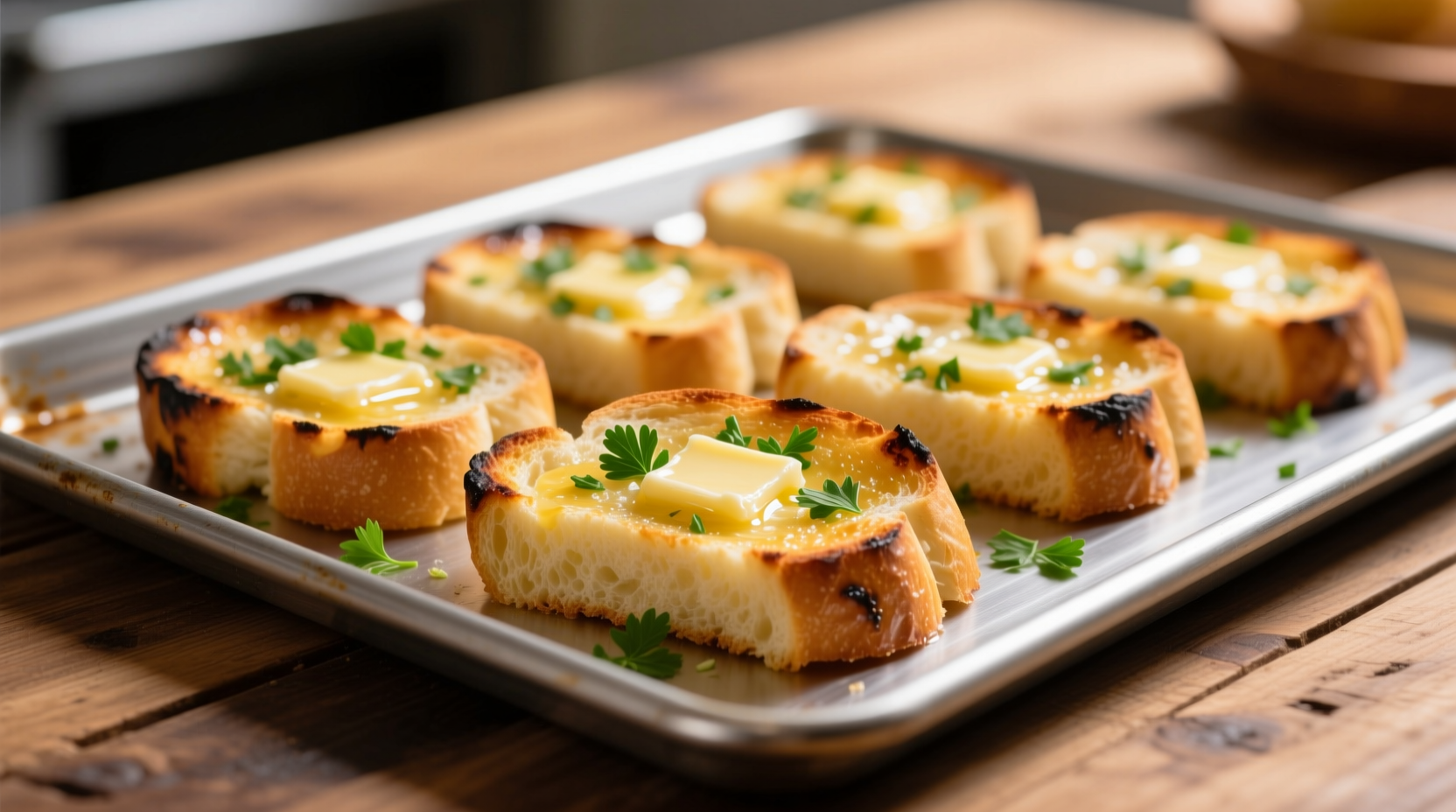Nothing transforms a simple meal like homemade garlic bread straight from the oven. Forget dry, burnt store-bought versions—this guide delivers restaurant-quality results with foolproof timing, temperature control, and flavor balancing techniques that even novice bakers can master. You'll learn exactly how to prevent soggy centers, achieve optimal browning, and create garlic bread that complements pasta nights, steak dinners, or stands strong as an appetizer.
Why Oven-Baked Garlic Bread Beats Other Methods
While toaster ovens and air fryers have their place, traditional oven baking provides the most consistent results for garlic bread. The even heat distribution creates uniform crispness without hot spots that cause burning. Professional chefs prefer this method because it allows precise control over the Maillard reaction—the chemical process responsible for that perfect golden crust and complex flavor development.
| Bread Type | Best For | Baking Time | Texture Result |
|---|---|---|---|
| Baguette | Crispy exterior | 12-15 minutes | Crunchy crust, chewy center |
| Ciabatta | Garlic butter absorption | 10-12 minutes | Open crumb, crisp exterior |
| Focaccia | Thick-cut slices | 15-18 minutes | Soft interior, golden top |
Essential Ingredients Checklist
The magic happens through three critical components working in harmony:
- Bread selection: Day-old French or Italian loaves work best—they're dry enough to absorb butter without becoming soggy. The USDA recommends choosing breads with minimal preservatives for optimal baking results.
- Fresh garlic: Never substitute powdered garlic for fresh cloves. The University of California's agricultural research shows fresh garlic contains allicin, which creates superior flavor when heated.
- Unsalted butter: Using unsalted butter lets you control sodium levels while providing the ideal fat content for flavor transfer.

Step-by-Step Baking Process
Follow this professional kitchen-tested sequence for guaranteed success:
- Prep your bread: Slice horizontally without cutting all the way through, creating a "hinge" for even butter distribution
- Make garlic butter: Combine 1 cup softened butter, 4 minced garlic cloves, 2 tbsp chopped parsley, and 1/4 tsp salt
- Temperature control: Preheat oven to 375°F (190°C)—critical for proper browning without burning
- Butter application: Spread mixture between slices and over top surface using a pastry brush
- Baking position: Place bread on middle rack with foil underneath to catch drips
- Timing precision: Bake 10-15 minutes until golden brown (12 minutes for thinner slices)
Avoid These Common Mistakes
Food safety researchers at the FDA note these critical errors that compromise both quality and safety:
- Using cold butter: Creates uneven melting and pooling—always soften butter to room temperature
- Overloading garlic: More than 4 cloves per loaf causes bitterness when baked
- Incorrect oven placement: Top rack position leads to burnt tops before interior cooks
- Skipping the rest period: Let bread rest 3 minutes after baking for optimal texture
Creative Variations Worth Trying
Expand your repertoire with these chef-approved adaptations that maintain structural integrity:
- Cheesy twist: Sprinkle 1/4 cup shredded Parmesan during the last 5 minutes of baking
- Herb infusion: Add 1 tsp dried oregano or rosemary to butter mixture for Mediterranean flair
- Spicy kick: Mix 1/4 tsp red pepper flakes into butter for subtle heat
- Garlic confit version: Use roasted garlic cloves for sweeter, milder flavor profile
Storage and Reheating Guidelines
According to culinary research from the Culinary Institute of America, proper storage maintains quality:
- Room temperature storage: Keep in paper bag for up to 24 hours (never plastic)
- Refrigeration: Wrap tightly in foil for 3-4 days
- Freezing: Slice and freeze individual portions for up to 3 months
- Reheating: 350°F oven for 5-7 minutes (avoid microwave for texture preservation)
When Oven Method Isn't Ideal
Context matters—this technique works best for:
- Full loaves or substantial slices (minimum 1/2 inch thickness)
- When serving 4+ people simultaneously
- As part of a multi-component meal where oven space is available
Consider alternative methods when:
- Preparing single servings (use toaster oven)
- Need immediate results (air fryer at 350°F for 6-8 minutes)
- Oven is occupied with main course (broiler method for 3-4 minutes)











 浙公网安备
33010002000092号
浙公网安备
33010002000092号 浙B2-20120091-4
浙B2-20120091-4